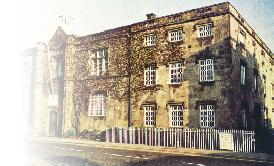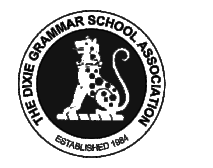


She went to Oxford university at a time when women were not permitted to have a degree. However, the rules were changed and she was successfully examined on the first day that they were allowed. Her scholarship is apparent in the many books she wrote on jewellery and mediaeval art, some which are in French. Like many members of the Evans family, she was an avid collector and her collection of over eight hundred jewels was presented to the Victoria and Albert Museum where it is now housed. She was appointed a Dame of the British Empire in 1976.
His eldest son, Arthur, did not enter the business but established himself as a leading archaeologist.
After Prep. School he entered Harrow School in 1865 aged 14. He did well. He was
co-
After spending time as a Correspondent on Balkan affairs for the Manchester Guardian, marriage to one of his former tutor’s daughters and in 1882, spending six weeks in prison awaiting trial as an “Agent provocateur” in Vienna, he returned to Oxford. In 1884, Evans at the age of 34, was appointed Keeper of the Ashmolean Museum.
He began the excavations at Knossos, for which he is best remembered, in 1900, just after Crete was declared a republic. By 1903, most of the palace was excavated, bringing to light an advanced city containing artwork and many examples of writing.
All the excavations at Knossos were done on leave of absence from the Ashmolean museum.
The Keeper’s salary was not generous but the conditions of residence were very liberal
... “the keeper could and should travel to secure new acquisitions”. But in 1908
at the age of 57 he resigned his position to concentrate on writing up his Minoan
work. This work was paid for by gifts from his father, and so we can see that it
was the profits from paper-
He soon proved a very capable employee and having thoroughly learned the business, set about developing some of the earliest machines for making envelopes, which up until then had to be folded by hand. Following the conversion of the business into a Limited Company in 1855, John retired. He had helped to establish a well respected business that is still trading today, John Dickinson & Co., part of the Hamelin Group. Maybe you have sent a letter in a Three Candlesticks envelope, without ever considering the link to the Dixie Grammar School, however tenuous it may be.
Outside his business, John followed his hobbies of coin collecting, numismatics, and of geology.
He was also president of the Geological Society of London, 1874–1876; He was awarded the prestigious Lyell Medal in 1880. He was president of the Anthropological Institute of Great Britain and Ireland, 1877–1879; the Society of the Chemical Industry, 1891–1893; and the British Association for the Advancement of Science, 1897–1898.
He was elected a Fellow of the Royal Society in 1864 and for twenty years he was its treasurer. He was appointed High Sheriff of Hertfordshire for 1881.
As President of the Society of Antiquaries he was an ex officio trustee of the British Museum, and subsequently he became a permanent trustee. His academic honours included honorary degrees from several universities, and he was a corresponding member of the Institut de France.
But it was the Numismatic Society, now The Royal Numismatic Society, which was his principal interest. He first joined in 1847, acted as Secretary from 1854 to 1874 after which he was President until his death in May 1908.
A Commemorative bronze medallion, with the bust of John Evans, was cast by the Numismatic Society in 1887 in recognition of his outstanding work for them. John Evans was made a Knight Commander of the Order of the Bath, KCB, in the Birthday Honours list of 1892.
However his interests were not entirely academic for he was also very active in local affairs being a churchwarden of two local churches in turn. As a Justice of the Peace he was closely involved in the formation of Hertfordshire County Council being its second Chairman for two years from 1901.
His son Lewis, continued in the running of the Dickinson business and his daughter, Joan wrote the history of the company, The Endless Web, published in 1953.